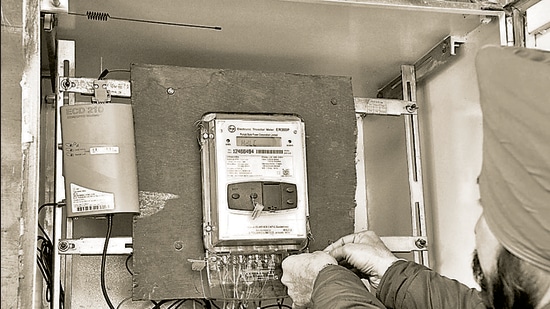Enhancing competition in India’s power sector
Fixing discoms is a pressing need, but it’s worth investing time in figuring out the details, including expected winners and losers, and possibilities for gaming
Budget 2021 didn’t deal much with energy, but it wasn’t expected to, especially after Covid-19. There were, however, tweaks all around, and some forward-looking plans such as for hydrogen. There was a welcome announcement of ₹3,05,984 crore for distribution companies (discoms), which have been called the weakest link in India’s vision for clean and smart electricity. On average, they lose tens of paise per kilowatt-hour they sell, and service quality remains low.

However, the budget was short on details. We have achieved almost 100% household electrification. Load-shedding is down. But the next steps on this journey are now more complex, with trade-offs and uncertainty. The aim is to unleash competition for efficiency and improvements. Competition can be through privatisation or third-party suppliers. Will this work? What are they expected to achieve?
The private sector is meant to bring in not just efficiency, but also new capital. But most states haven’t chosen privatisation. Odisha (re)privatised in 2020, and the last one before that was Delhi in 2002. The Centre is aiming to bring in consumer choice through new distribution entities to compete against the incumbent monopoly public sector discoms.
Consumer choice sounds good, but there are only two ways to make this happen. Either a new entrant has to lay down parallel infrastructure (which is unviably expensive — distribution is a natural monopoly), or one has to have structural separation between wires and retail (termed carriage and content separation). Due to headwinds and complexity, such separation went in and out of proposed amendments to the Electricity Act, 2003. New proposed amendments don’t mandate carriage and content separation, but achieve similar functionality via “delicensing” electricity distribution, mandating that new players be given unfettered access to existing wires.
While new entrants may have access to the incumbent’s wires, how much gain is possible through management efficiency? Three-quarters of electricity prices are for power procurement, and not only do we have legacy generator power purchase agreements (PPAs), we also have enormous distortions and price variations across generators based on location, vintage, and type. Utilities which enjoy superior contracts will have cheaper power — it has less to do with management skills.
Before we consider retail electricity competition, we must have wholesale competition. Wholesale power markets (through power exchanges) today handle only some five per cent of power. Wholesale competition suffers from the structural distortions listed above, and until we have liquidity in fuel markets and flexibility in PPAs, those with cheaper power will again be those who gain superior fuel and offtake contracts.
The challenge is creating a liquid, competitive market with multiple players. Equally challenging, on the retail side, is the fact that a new entrant would want to cherry-pick consumers. Can a new entrant sufficiently differentiate itself? Say we have a consumer willing to pay a premium for quality supply, and wants to avoid diesel back-up power. They could ask for a “gold plan”, but who could deliver this to them?
Today, supply decisions like load-shedding happen at the feeder level, with thousands of consumers as a group. How does a provider give better supply to one consumer without also giving better supply to all their neighbours? This free-rider problem was seen in Pune which attempted to prioritise supply to industry at a feeder level, including through niche express feeders. But some consumers along the way didn’t want to pay any premium. And then, consumer groups and regulators asked — shouldn’t everyone enjoy gold quality supply?
The only way to technologically differentiate users is via smart meters, but these are not easy to deploy. Aggressive targets such as universal smart metering in three years risk not just failures to scale but the risks of discom unpreparedness (especially for the underlying databases of consumers and assets), high costs, and missing functionality. Smart meters are a powerful tool, but they should be driven by the individual business case per utility, which should drive the design. The Centre might cover some of the costs of smart meters but is external funding the real need? Smart meters also need smart pricing. It’s telling that, every year, we have underspent money on human capacity-building, which is a key gap for such transformations.
We need to be much more aggressive in planning beyond the next few years — infrastructure lasts decades. We should use smart grids to solve not just “yesterday’s problems” such as losses and theft, but tomorrow’s challenges of managing electric vehicles and a complex system where end-users have not just cheap rooftop solar but even batteries and peer-to-peer transactions (if allowed).
Fixing discoms is a pressing need, but it’s worth investing time in figuring out the details, including expected winners and losers, and possibilities for gaming. Otherwise, there will be resistance, or we may find many unintended consequences. Are states ready to depoliticise electricity, and pay their consumption dues and subsidies obligations on time? Improvements need not just money but the alignment of incentives and political will. This may require more consequences for failures to perform instead of bailouts, repeated extensions of deadlines, or ignoring failures to comply with norms. Until this changes, we risk throwing good money after bad.
Rahul Tongia is senior fellow, Centre for Social and Economic Progress (CSEP)
The views expressed are personal



